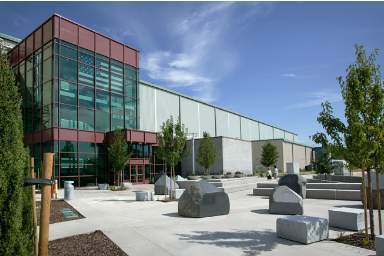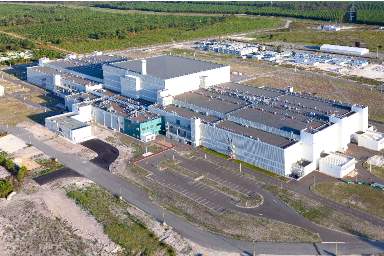
To achieve fusion the HiPER facility will require approximately 1MJ of laser energy per pulse to be accurately focused onto a moving target within the reactor. For viable commercial energy production, HiPER must continuously repeat this fusion reaction at least ten times per second. These basic requirements pose a major challenge to the laser design community, but one that is likely to be met within the next ten years.
Existing laser facilities capable of ignition-level performance, (1MJ plus), include the National Ignition Facility (NIF) in the United States and Laser Mega Joule (LMJ) in France. These facilities are limited as they are designed only to fire a single shot every twenty to thirty minutes. These lasers are unsuitable for HiPER, but can be used to test and verify HiPER target designs.


A step-change in laser technology is required to meet the HiPER 10Hz requirement. This is now being realised in the development of Diode Pumped Solid State Lasers (DPSSL).
High Power Laser Diodes are similar to the light emitting diodes (LEDs) which form the picture on modern LED televisions or operate as day running lights on modern cars. Laser diodes operate in “pulsed” mode at specific frequencies and with very high intensities compared to the LEDs commonly seen. They provide high intensity short duration pulses which 'pump' energy into solid state laser gain material, where the energy is briefly “stored” by raising the energy level of electrons within the material. Rather like storing water in a reservoir, the more energy is stored, the greater the potential energy available … until the reservoir is full. When that point is reached the gain material is 'saturated'.
A 'seed beam' is then passed through the gain material, triggering some electrons to drop down to their normal lower energy level – a process resulting in the emission of photons of laser light. These photons add to and hence .amplify. the 'seed beam', causing a small gain in its power. This is known as a “single pass”.
Using mirrors and filters, the amplified seed is then passed back through the gain material, resulting in further amplification. This is known as the 'second pass'.
The process is then repeated until the energy density of the beam on the surface of the gain medium is great enough that further amplification could result in damage to the optics. At this point the fully amplified beam is allowed to continue its journey through the laser system.

Typical amplifier multi-pass arrangement with pump and beam extraction.
The first generation of High Power DPSSL lasers exist today. Operating at repetition rates of 10Hz and providing energies of up to 50J in a single beam, these new lasers are leading the way to higher energy devices of the near future.
The requirement for a standard HiPER beamlet (one tenth of a complete HiPER laser) is 1kJ 10Hz. Modelling undertaken to date shows that this performance can be achieved by scaling up existing amplifier architectures. Development continues and true HiPER driver lasers are expected to be available from around mid 2018.
This game-changing advance in laser technology will have many new industrial and medical applications, likely to change our way of life, much as CD and DVD players have done in recent years.
![]()